5 Best Things to do in Uruguay
Uruguay, South America / March 4, 2025 / Be the first to comment
Uruguay was colonized by Spain and Portugal in the late 17th century. Since it shares borders with Argentina and Brazil, it’s often omitted when visiting South America. This is much later than neighboring countries such as Peru and Chile. The original inhabitants of the land were the Charrua people but little of their culture remains today.
Uruguay offers visitors much to see and do, including great cuisine, unexpected traditions, and plenty of natural attractions. Here are five of the best things to do in Uruguay.
This post contains affiliate links. This means if you purchase something from a link, I may make a small commission, at no cost to you. This helps me keep the site running and free.
If you like this post, be sure to sign up for my e-mail list for travel inspiration (and get your FREE budget printable), or connect with me on Facebook, Instagram, Twitter, or Pinterest.
Explore Montevideo
Capital cities are the gateway to the rest of the country and Montevideo is no exception. An eclectic mix of colonial and Neoclassical architecture, African influences, and the flair of Europe, Montevideo is a beautiful combination.
There are plenty of things to do in the city including the Tango Museum of Montevideo and Ciudad Vieja (Old City). Ciudad Vieja is home to the Citadel Gate – the only remaining part of the walls that enveloped the city. Art lovers can explore a variety of art museums throughout the city including the National Museum of Visual Arts and the Museo Torres Garcia.
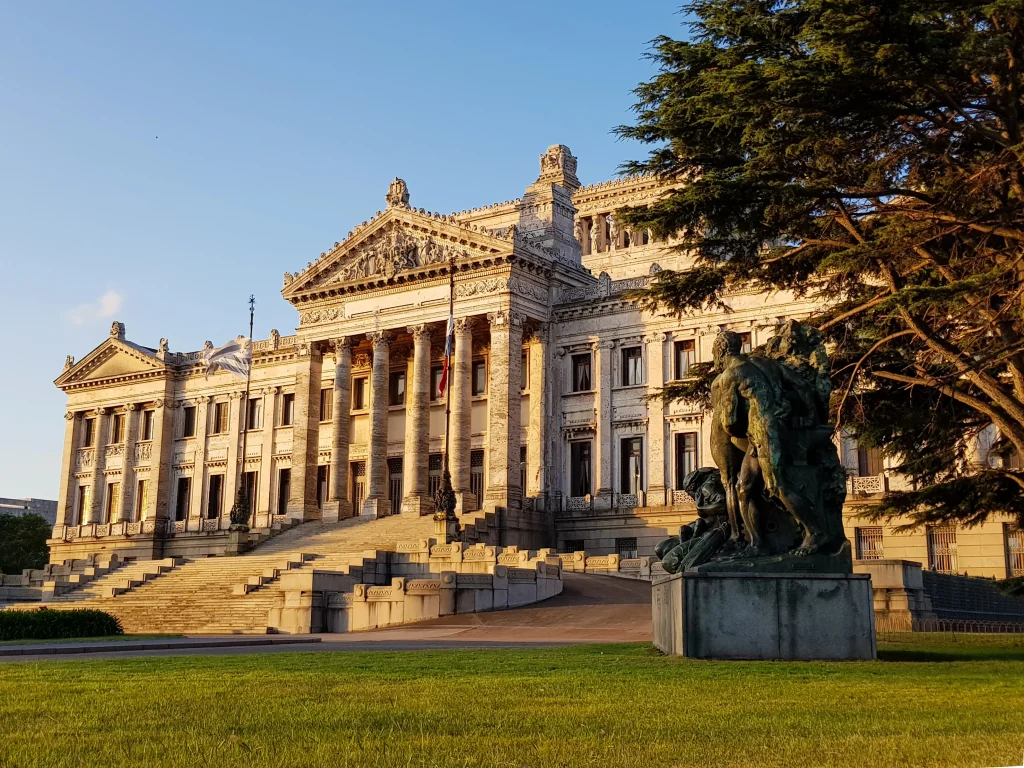
Join a Candombe in Montevideo
Recommended by Anthony of Green Mochila
Wander the streets north of Parque Rodó, Montevideo, on a Sunday evening around 6 pm and you’ll first hear a rumble. It might just be a distant roar at first but don’t be shy and follow it. As the rumble grows louder and you start feeling it in your stomach, you recognize drums – several of them. They’re divided into three ‘voices’ that seem to answer each other in a boisterous but joyful conversation.
Take a corner and you finally see them: a dozen drummers are creating this beautiful noise. They’re slowly marching under the moon and the rare lampposts. In front of them, a handful of dancers seem to be in a trance; a group of between 10 and 50 passers-by follow behind or on the sides. Traffic has been halted and neighbours watch from their windows.
You’re witnessing Candombe, music developed by African slaves as a means of expression. Nowadays, it’s played by the multi-ethnic youth of Uruguay to express their freedom.
Go on and follow the procession. The atmosphere is raw, vibrant, and charged with a beautiful communion of the dancers with the drums and the onlookers either chatting or quietly following. Sunday-night Candombe is an hour of passionate exchange; but also a small rehearsal for the big hustle and bustle that takes place at the carnival.
If you want to better understand the culture of this overlooked country, a moment of Candombe in Montevideo should be part of your Uruguayan bucket list. It tells of joie de vivre, spontaneity, and how a dark past resulted in such a colourful population. Don’t miss it!
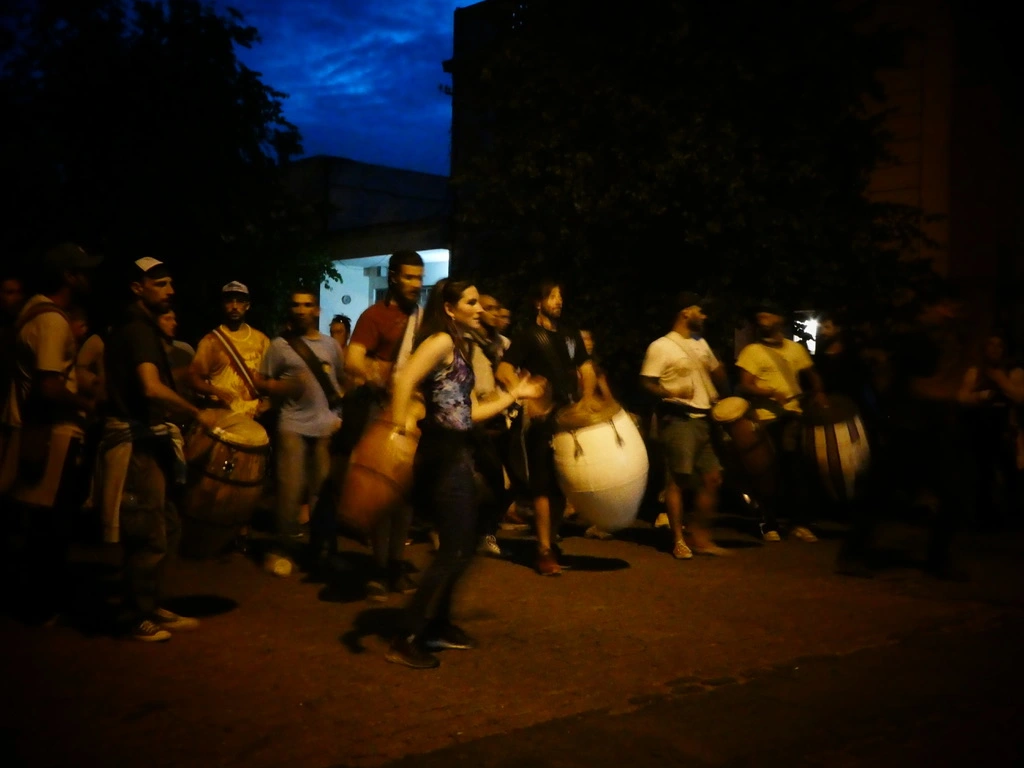
San Gregorio de Polanco
Recommended by Juergen of Dare2Go
San Gregorio de Polanco is a small town in Uruguay, which might have been overlooked by your guidebook. Nevertheless, it is a very worthwhile destination for several reasons. The town is full of colourful murals and every year more are added to its streetscape.
Many of these intriguing large pieces were painted by some of Uruguay’s best-known contemporary artists. You will find different painting styles, from naïve to impressionist, from abstract modern to very traditional. Follow the link for more photos of individual murals from San Gregorio de Polanco.
The town is small and easily explored on foot. Just take your camera, wander the streets and see what you discover. Don’t forget to include the lakeshore, where a number of large sculptures are on permanent display.
With its long sandy beaches, the lake itself is the second drawcard of San Gregorio. As the main town on the shores of Lago Rincón del Bonete, Uruguay’s largest lake, the town offers all major services. This makes it a perfect alternative for those who don’t want to stay at the often busy and (in season) expensive oceanfront of Uruguay.
San Gregorio de Polanco is located almost right in the centre of Uruguay, a little over 300 kilometres north from Montevideo. It’s a popular destination for Uruguayans and offers a range of accommodation options, from simple camping to holiday flats to interesting hotels. During peak season, Christmas until late February and during Easter holidays, it might be advisable to book ahead.
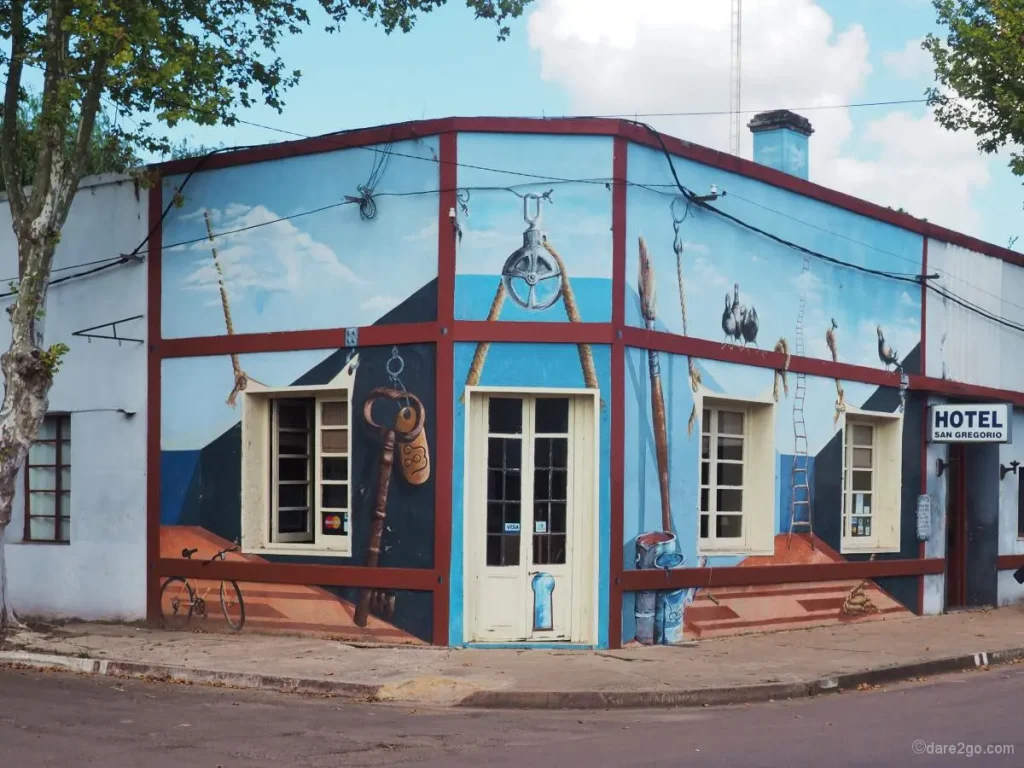
Visit a Picturesque Beach
Many people don’t realize that Uruguay is home to some incredible beaches. While it doesn’t have golden sand or turquoise waters, the pristine and peaceful beaches are still one of the best things to do in Uruguay. Punta del Este beach is one of the most famous as it comes with the rich and famous (and a lively attitude throughout most of the day). Montevideo has a number of beaches surrounding it featuring water sports or a tranquil walk along the Rambla (it’s 22km long though so maybe don’t walk the whole thing!) For travelers who prefer strong waves, head to Piriápolis which is also the oldest beach resort in Uruguay. Punta del Este (pictured below) is a less crowded option for travelers who prefer softer waves and plenty of space to spread out.
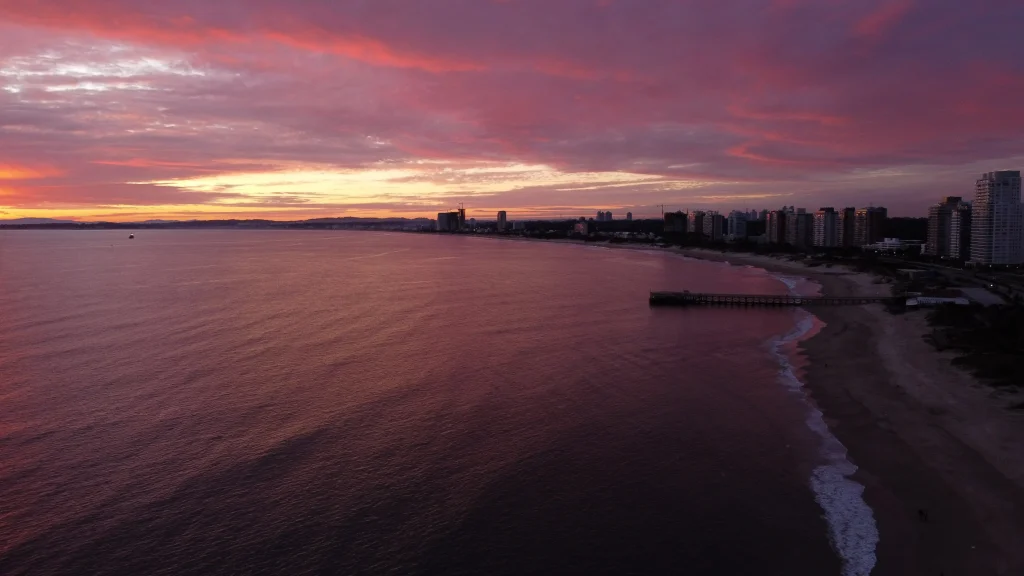
Visit Colonia del Sacramento
Recommended by me, The Directionally Challenged Traveler
Located on the west coast of Uruguay, Colonia del Sacramento is a small town with plenty to offer. It’s one of the best day trips from Buenos Aires since it’s so easy to get to via ferry. The town is a UNESCO World Heritage site lined with cobblestone streets and Instagram-worthy photo opportunities almost everywhere you look. The size of the city makes it ideal for walking aimlessly.
Travelers will find locally-owned shops and small restaurants serving fresh food. Be sure to stroll down the Street of Sighs, which is said to be the most photogenic road in Uruguay.
You can even explore an original drawbridge used to keep invaders out of the city. The gate is still in all its original glory – standing tall in the city. It’s a great way to get a glimpse into the complicated history of Uruguay.
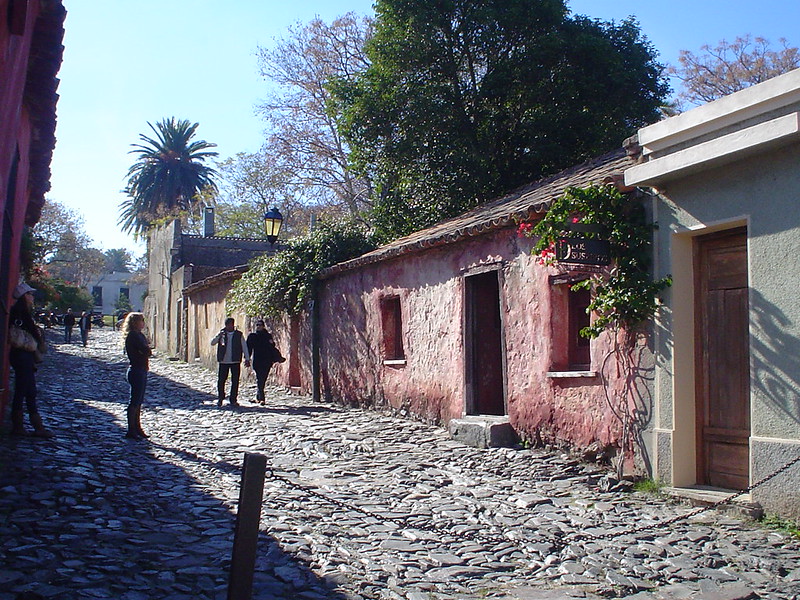
You can also book a day tour to Colonia del Sacramento from Montevideo:
Got a favorite that didn’t make the list? Let me know and I’ll add it as a reader favorite!
Pin “Best Things to do in Uruguay” for Later!
About the Author












Leave a Reply